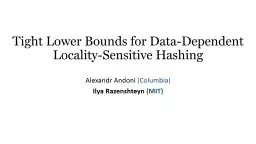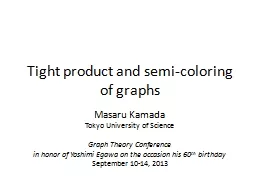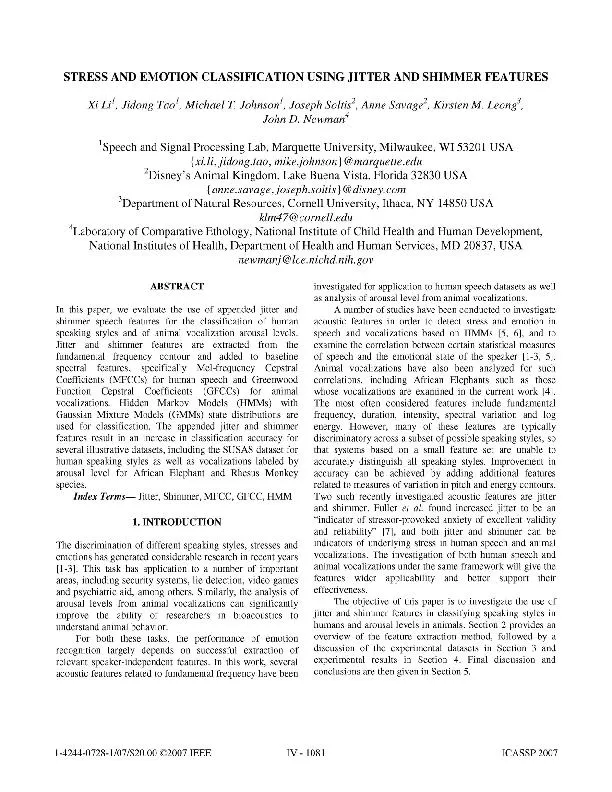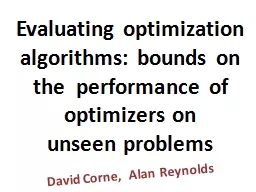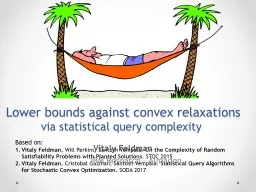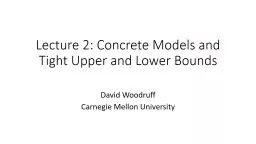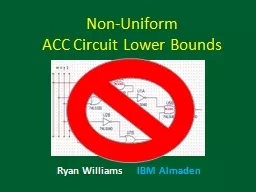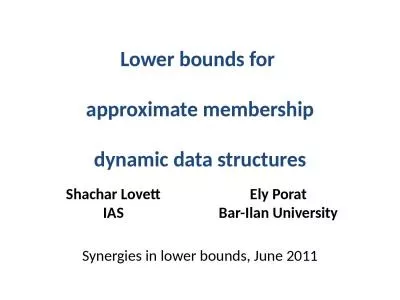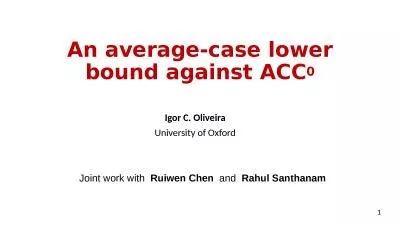PPT-Tight Lower Bounds for Data-Dependent
Author : phoebe-click | Published Date : 2018-11-04
L ocality S ensitive H ashing Alexandr Andoni Columbia Ilya Razenshteyn MIT CSAIL Near Neighbor Search Dataset points in Goal a data point within from
Presentation Embed Code
Download Presentation
Download Presentation The PPT/PDF document "Tight Lower Bounds for Data-Dependent" is the property of its rightful owner. Permission is granted to download and print the materials on this website for personal, non-commercial use only, and to display it on your personal computer provided you do not modify the materials and that you retain all copyright notices contained in the materials. By downloading content from our website, you accept the terms of this agreement.
Tight Lower Bounds for Data-Dependent: Transcript
Download Rules Of Document
"Tight Lower Bounds for Data-Dependent"The content belongs to its owner. You may download and print it for personal use, without modification, and keep all copyright notices. By downloading, you agree to these terms.
Related Documents

